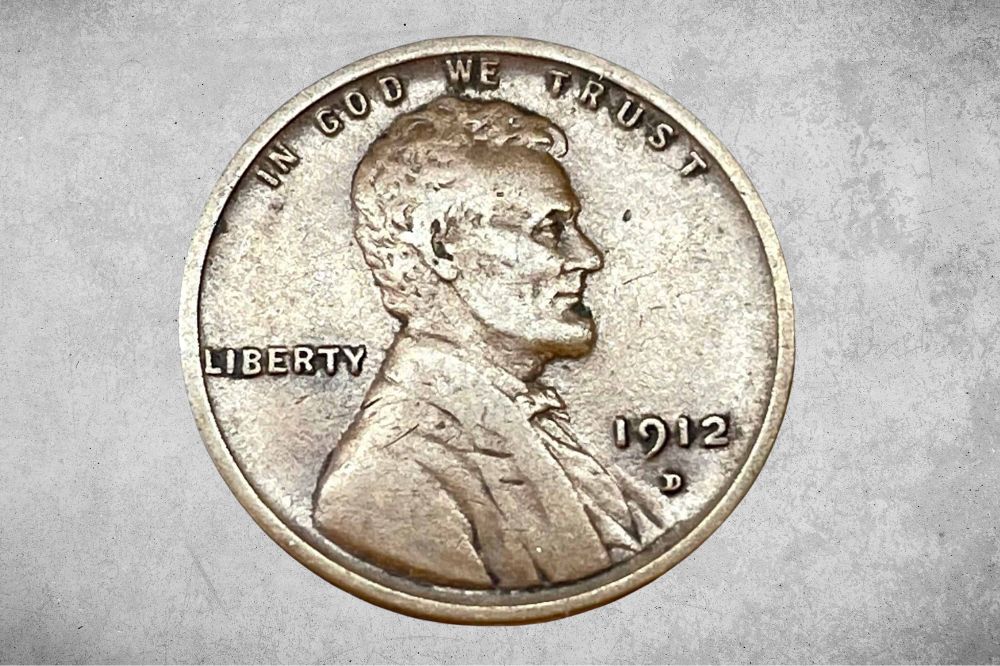Looking to learn about the 1912 penny value? This coin review is here to help. With valuable insights into the realm of coin collecting, we provide an in-depth analysis of this wheat penny along with expert tips on how to assess its authenticity, condition, worth, and some known errors.
Join us in the world of numismatics as we reveal the secrets behind the 1912 penny’s value. This guide will equip you with the knowledge needed when it comes to assessing the worth of your 1912 penny.
1912 Penny Value Details
- Category: Lincoln, Wheat reverse (Bronze)
- Mints: Philadelphia, Denver, San Francisco
- Total Mintage: 68,153,060
- Obverse Design: Abraham Lincoln
- Reverse Design: Wheat leaves on both sides
- Designer: Victor D. Brenner
- Composition: 95% copper; 5% zinc & tin
- Diameter: 19 mm (0.748031 inches)
- Mass: 3.11 grams
- Thickness: 1.55 mm (0.06102 inches)
- Edge: Plain
Also Read: Top 20 Most Valuable Old Pennies Worth Money (Penny Collection)
1912 Penny Value Chart
Here’s the recent value of 1912 Penny Value according to the Greysheet website.
| 1912 Penny Value Chart | |||||
| Mint Mark | MS61 | MS62 | MS63 | MS64 | MS65 |
| 1912 No Mint Mark Penny Value (BN) |
$45.36 |
$50 |
$57 |
$105 |
$115 |
| 1912 No Mint Mark Penny Value (RB) |
– |
– |
$68 |
$130 |
$390 |
| 1912 No Mint Mark Penny Value (RD) |
– |
– |
$122 |
$195 |
$650 |
| 1912 D Penny Value (BN) |
$257 |
$289 |
$351 |
$390 |
$702 |
| 1912 D Penny Value (RB) |
– |
– |
$413 |
$507 |
$960 |
| 1912 D Penny Value (RD) |
– |
– |
$468 |
$1,080 |
$1,250 |
| 1912 S Penny Value (BN) |
$250 |
$270 |
$312 |
$507 |
$998 |
| 1912 S Penny Value RB |
– |
$312 |
$468 |
$671 |
$1,350 |
| 1912 S Penny Value RD |
– |
$507 |
$624 |
$1,090 |
$3,000 |
1912 Penny Value and Varieties Guide
In this section are the varieties of 1912 Penny Value minted and their value in the market world, which could change depending on the coin’s condition.
1912 No Mint Mark Penny Value
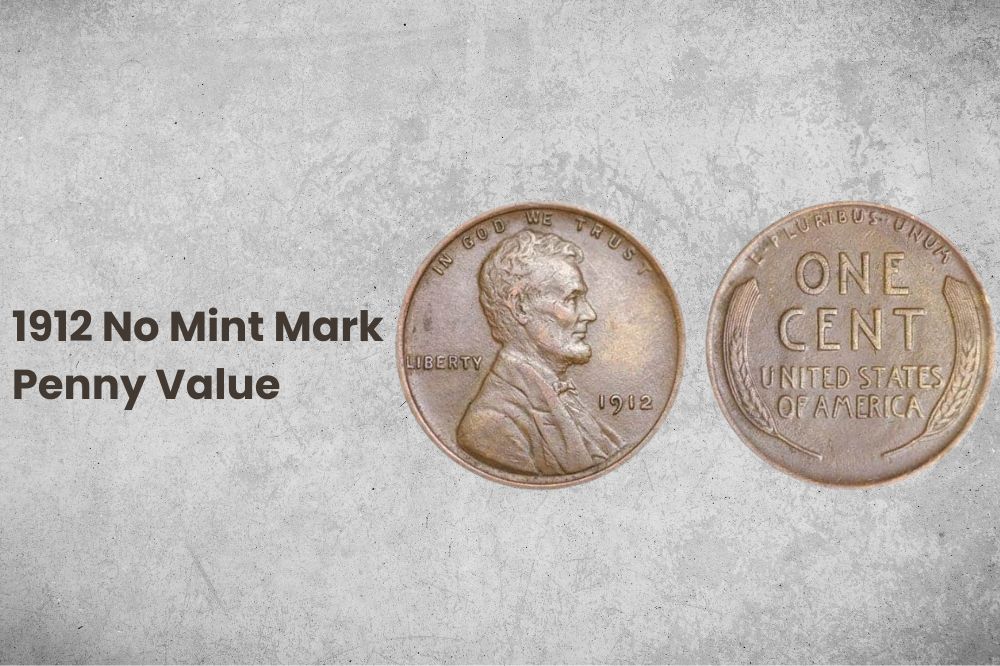
- Type: Lincoln, Wheat Reverse
- Edge: Plain
- Mint mark: None
- Place of minting: Philadelphia
- Year of minting: 1912
- Face value: $0.1
- $ price: $45.36 to $115
- Quantity produced: 68,153,060
- Designer: Victor D. Brenner
In 1912, the Philadelphia mint made the most coins, with over 68 million pieces. Today, a penny in good condition can cost anywhere from $25 to $6,000, while circulated ones are worth between $1 and $30. To find out how much a coin is worth, you need to know its type, date, mintmark, and grade. The value of a coin can vary depending on the market and the dealer.
While it is typical for early Lincoln cents to display signs of wear and tear, a 1912 cent in prime condition is a scarce and highly coveted item for collectors. One may leverage provided imagery as a reference point to ascertain the value of their coin.
Determining a 1912 Wheat Pennies worth is subject to the interplay of two important factors: availability and condition. The preliminary step towards gauging its value involves scrutinizing the coin’s date and mintmark, followed by evaluating its state.
In 2006, a remarkable auction event occurred where a penny fetched an astonishing $21,850, a significant sum for a single cent. The penny in question was in impeccable condition and was sold by its owner, who was pleasantly surprised to receive a higher bid than anticipated.
1912 D Penny Value
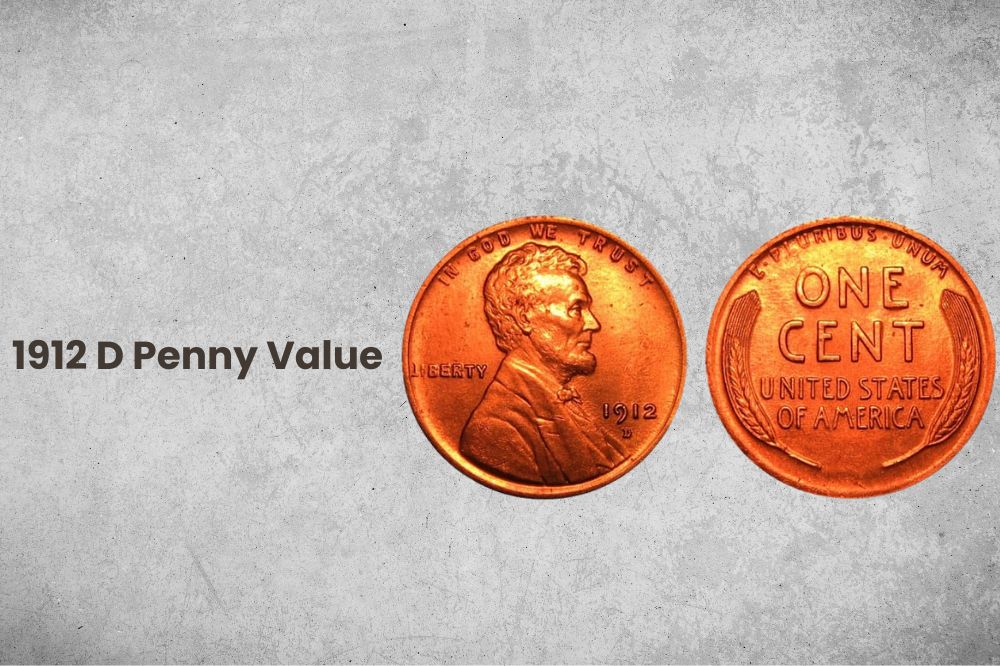
- Type: Lincoln, Wheat Reverse
- Edge: Plain
- Mint mark: D
- Place of minting: Denver
- Year of minting: 1912
- Face value: $0.1
- $ Price: $257to $702
- Quantity produced: 10,411,000
- Designer: Victor D. Brenner
It may be challenging to come across the Denver Mint variety coin of 1912 Penny, but it holds significant value in good condition and would make a precious addition to any collector’s collection. It is imperative to grade the coin properly, particularly if there is a noticeable sharpness in Lincoln’s hair and beard.
Surprisingly, even substandard 1912 D Wheat Pennies can fetch a significant sum of money; therefore, remaining vigilant for their discovery holds utmost importance. Regardless of their condition, it is advisable to retain these coins.
1912 S Penny Value
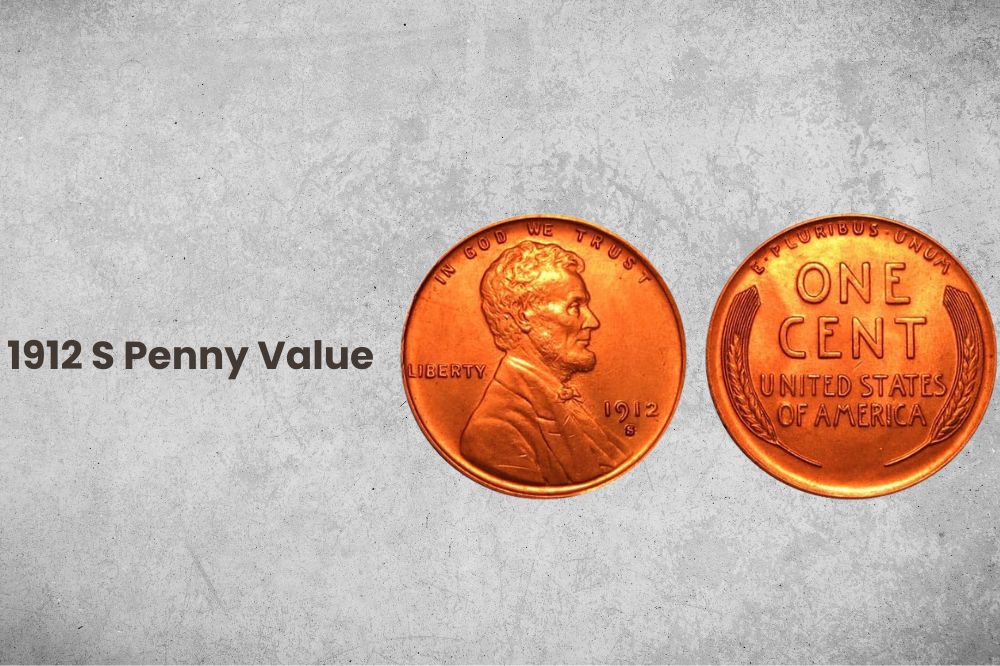
- Type: Lincoln, Wheat Reverse
- Edge: Plain
- Mint mark: S
- Place of minting: San Francisco
- Year of minting: 1912
- Face value: $0.1
- $ Price: $250to $998
- Quantity produced: 4,431,000
- Designer: Victor D. Brenner
The 1912-S Lincoln wheat cent is a prized numismatic artifact known for its scarcity and high value. This coin’s production was limited to a mere 4,431,000, contributing to its allure among collectors of all expertise levels.
Advanced collectors are particularly drawn to the exquisite and costly high-grade specimens, while even lower-grade variants are a desirable addition to any collection seeking to acquire a scarce and distinctive coin. It is especially rare to find one in fully red gem condition.
Most coins in lower grades are damaged or corroded, and examples in higher circulated grades are rarely seen. Collectors have had difficulty finding this coin in circulation since the late 1930s.
In 1912, a distinctive penny with a striking crimson hue was minted in San Francisco. Fast forward to 2003, when an esteemed collector shelled out a staggering $27,600 to acquire this rare piece, which was the priciest San Francisco penny from its era.
1912 Wheat Penny History
Victor David Brenner, a notable sculptor, and engraver is renowned for designing two iconic U.S. coins that feature Abraham Lincoln’s image: the 1909 Lincoln penny and the 1912 Lincoln cent. Interestingly, Brenner’s initials, “VDB,” were displayed prominently on the reverse side of the 1909 penny. However, they were later removed due to public outcry over their size.
It was not until 1918 that the initials were reinstated on the obverse side of the coin, located discreetly below Lincoln’s shoulder. Brenner’s contributions to the design of these coins remain significant milestones in the history of U.S. currency.
The 1912 Lincoln penny, a numismatic gem, presents an intriguing combination of historical value and aesthetic distinction. There were not many Wheat cents because that year, and only a few were made compared to other years. The mints in Philadelphia, Denver, and San Francisco made about 83 million cents that year. But in 2012, 100 years later, over 12 billion cents were made, which is a lot more!
As a centenarian artifact, it bears a captivating allure for collectors. The coin’s distinctive design is further enhanced by its scarcity, as it is no longer in circulation.
The obverse of the coin features a profile of President Abraham Lincoln alongside the inscription “In God We Trust.” On the reverse, the phrase “United States of America” and “One Cent” are enclosed by two wheat stalks, while the phrase “E Pluribus Unum” is inscribed at the top. Overall, the 1912 Lincoln penny stands as a prized possession for numismatists due to its unique history and distinctive aesthetics.
1912 Wheat Penny Value Grading
Coin collectors typically prefer to have their coins graded by experts to determine their official condition. The four grades for a 1912 Lincoln penny are Uncirculated, Extremely Fine, Fine, and Good. An Uncirculated penny has never been in circulation, while a Good penny has seen better days and has significant scratches and smoothing. All of the Good grades describe a 1912 heavily worn penny.
For more information on how 1912 Wheat Penny is graded, check out this Youtube video from World Numismatic News.
1912 Wheat Penny Errors
The 1912 wheat penny is a coin that was minted by the United States Mint as part of the Lincoln cent series. There were no major errors or varieties known for this particular year, but there are a few minor varieties that exist, including the:
1. 1912 Wheat Penny Die Cracks Error
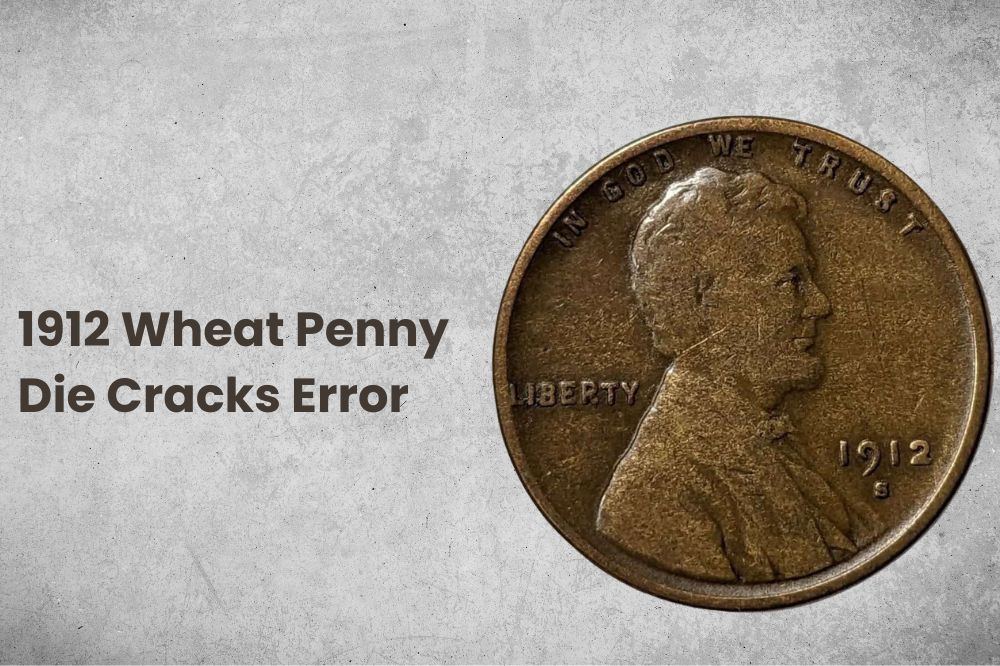
In numismatic circles, it is not uncommon to encounter coins that feature a slightly raised relief on their surface where a die crack would normally appear. This occurrence in 1912 Wheat Penny may be attributed to the utilization of an antiquated and deteriorated die during the striking process.
The value of such pennies can range anywhere from $1 to $100, contingent upon the size and prominence of the crack, as mentioned above.
2. 1912 Wheat Penny Off-center Error
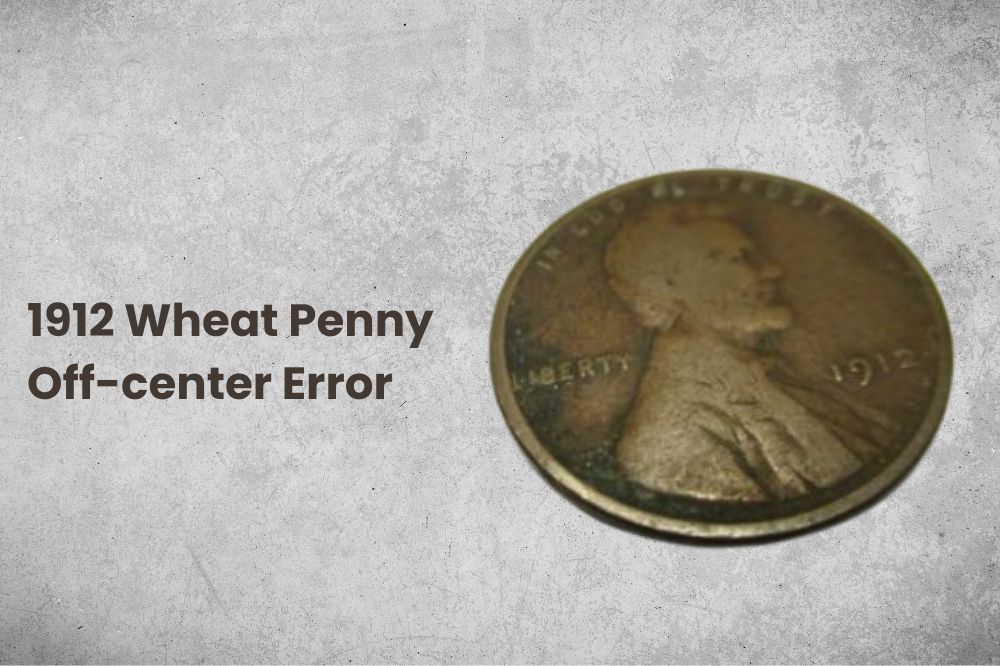
Experienced collectors hold a keen fascination for pennies dating back to 1912 featuring blank crescents, with specimens exhibiting slight blemishes fetching anywhere between $5 to $10.
However, specimens displaying off-center errors ranging from 5% to 10% command a higher value. A 1912 Wheat penny boasting 50% of its design and a legible date can be sold for a few hundred dollars.
3. 1912 Wheat Penny Repunched Error
During the year 1912, a subset of Wheat pennies was minted in San Francisco bearing a distinctive doubling of the letter “S” on one side. These coins are considered to be quite scarce, and their monetary value generally falls within the range of $5 to $25.
4. 1912 Wheat Penny Altered Date Error
An alteration has been made to a coin, whereby the original date of 1944 has been manipulated to appear as 1912 Wheat Penny through the partial removal of the numeral “4”. As a result, the spacing between the digits on the coin now appears irregular due to the absence of a portion of the altered numeral.
1912 Wheat Penny FAQs
Q1: Is a 1912 penny rare?
It is a well-known fact among numismatists that a substantial number of Lincoln cents produced during the years 1909 to 1933 exhibit considerable wear and tear. However, locating a 1912 cent that is in an impeccable state with minimal signs of usage is indeed a rarity. Consequently, it endows it with significant value as a coin.
Q2: Why is a 1912 wheat penny valuable?
The wheat penny holds significant value due to its intriguing history. During World War II, the scarcity of copper led to the production of pennies that were predominantly composed of zinc-coated steel rather than the traditional 95% copper.
The subsequent year saw a few pennies produced inadvertently on steel planchets, rendering these coins exceedingly rare and sought-after among collectors. As such, the wheat penny’s value is closely tied to its historical context and scarcity, making it a valuable addition to any numismatist’s collection.
Q3: How to determine the 1912 penny value?
According to the Coin Study website, to determine the value of a collectible item like a 1912 wheat penny, there are three essential steps to follow. The initial step is to identify the coin’s date and mintmark variety, which is crucial in determining its rarity and potential worth.
The next step is to evaluate the condition of the penny by scrutinizing detailed images of both sides of the coin. This process is vital in determining its overall state of preservation and any potential defects or damage that may affect its value
Finally, it is essential to consider any unique characteristics or attributes that may contribute to the coin’s worth, such as its historical significance, rarity, or provenance. With these three steps, one can expertly determine the accurate value of a 1912 wheat penny or any other collectible item.
Q4: What wheat pennies are worth $1000000?
A wheat penny recently acquired by Mr. Simpson, a distinguished member of the esteemed Texas Rangers baseball organization, boasts an exorbitant price tag of $1 million.
This rare penny, dated 1943, was originally intended to be composed of steel; however, due to an inadvertent mistake, a limited number were minted using bronze. Mr. Simpson was able to secure the finest specimen among this exclusive group.
Conclusion
In conclusion, the 1912 wheat penny is a fascinating coin that tells a story of American history and the evolution of currency. With its intricate design, various varieties, and potential errors, the 1912 wheat penny is a coin collector’s dream. Its value, which ranges from a few dollars to thousands, is a testament to its rarity and desirability.
Whether you are a professional collector or just starting your journey, the 1912 wheat penny is a must-have addition to your collection. So next time you come across this historical coin, take a moment to appreciate its beauty and significance in American numismatics. Who knows, you might even hold onto a valuable piece of history that could fetch a hefty sum at auction!
